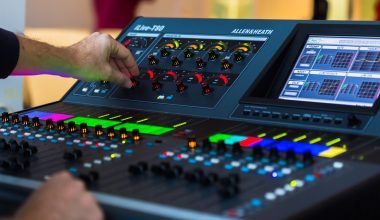If you’ve ever been scrolling through your favorite music app and stumbled upon something called an “EP,” you might have wondered what it means. Don’t worry; you’re not alone! The term “EP” has been around for decades, but many people aren’t sure what it actually is. In this blog, we’re going to break it down in simple terms. By the time you finish reading, you’ll know exactly what an EP is, why artists make them, and how they fit into the world of music.
What Does EP Stand For?
EP stands for “Extended Play.” It’s a type of music release that sits somewhere between a single and an album. Think of it as a short collection of songs. While a single usually features just one or two tracks, and an album might have 10 or more, an EP typically includes 4 to 6 songs. It’s like a mini-album, but not quite as long or comprehensive as a full album.
Why Do Artists Release EPs?
Artists release EPs for many reasons, and understanding this can give you a deeper appreciation for their work. Here are some common reasons:
- Experimentation: EPs give artists the freedom to try something new without committing to a full album. They can explore a new genre, collaborate with other musicians, or test out different sounds.
- Cost-Effective: Producing a full album can be expensive and time-consuming. EPs are a more affordable way for artists to share their music with fans.
- Staying Relevant: In today’s fast-paced music industry, releasing an EP can help artists stay in the spotlight between albums. It’s a way to keep their audience engaged and excited.
- Debut Projects: For new artists, an EP is a great way to introduce themselves to the world. It allows them to showcase their talent without the pressure of creating a full-length album.
The History of EP Music
The concept of an EP isn’t new. It actually dates back to the mid-20th century when vinyl records were the primary way people consumed music. At that time, EPs were shorter records that could hold a few songs on each side. They were often used for promotional purposes or as a way for artists to release a smaller collection of songs without committing to a full album.
In the digital age, the definition of an EP has evolved. Today, an EP can be released on streaming platforms, sold as a digital download, or even pressed into vinyl or CDs. The idea remains the same: it’s a compact, focused piece of work that gives fans something to enjoy without the length of an album.
How Does an EP Differ From an Album?
It’s easy to confuse an EP with an album, especially since they’re both collections of songs. However, there are some key differences:
- Length: Albums usually have 8 to 15 songs and can run for an hour or more. EPs, on the other hand, typically have 4 to 6 songs and last about 15 to 30 minutes.
- Purpose: Albums are often seen as a complete body of work with a central theme or story. EPs are more like snapshots of an artist’s current ideas or experiments.
- Budget: Because they’re shorter, EPs are less expensive to produce, making them a popular choice for indie artists or those working with limited resources.
Who Benefits From EPs?
EPs are a win-win for both artists and fans. Let’s take a closer look at how:
- For Artists: EPs provide flexibility. Whether they want to test new waters, build hype for an upcoming album, or stay connected with their audience, EPs offer a lot of creative freedom.
- For Fans: EPs are like a treat. They’re shorter than an album, which makes them perfect for quick listens. Plus, they often give fans a glimpse into an artist’s creative process or a preview of what’s to come.
How to Spot an EP
If you’re browsing music online or at a record store, here are some ways to identify an EP:
- Track Count: If the release has more than 1-2 songs but fewer than 8, it’s likely an EP.
- Duration: EPs generally last between 15 and 30 minutes.
- Labeling: Many artists and platforms will explicitly label a release as an “EP.”
Famous EPs That Made an Impact
Over the years, many EPs have left a lasting impression on the music world. Some notable examples include:
- “Jar of Flies” by Alice in Chains: This acoustic EP became a massive hit and even topped the Billboard 200 chart.
- “My Dear Melancholy,” by The Weeknd: A dark and emotional EP that showcased The Weeknd’s versatility.
- “Collide With the Sky” by Pierce the Veil: A collection that introduced the band to a wider audience and demonstrated their unique style.
Why You Should Listen to EPs
If you’ve never given much thought to EPs before, now is the time to start exploring them. Here’s why:
- Variety: EPs often feature diverse tracks, making them a great way to experience an artist’s range.
- Accessibility: With their shorter length, EPs are perfect for discovering new artists without committing to a full album.
- Exclusivity: Many EPs include unique songs or collaborations that you won’t find anywhere else.
How EPs Are Changing the Music Industry
In today’s streaming-focused music industry, EPs are more relevant than ever. They’ve become a popular way for artists to release music in smaller, more frequent doses. This approach aligns with how listeners consume music today: quickly, on-the-go, and in shorter bursts.
For independent artists, EPs offer a chance to compete in a crowded market without the resources needed for a full album. For established artists, they’re a way to keep fans engaged between major releases.
Final Thoughts on EP Music
So, what is EP music? It’s a powerful, flexible format that has stood the test of time. Whether you’re a casual listener or a die-hard music fan, EPs offer something special. They’re compact, creative, and full of surprises. Next time you come across an EP, give it a listen. You might just discover your new favorite artist or song!
Related Articles:
For further reading, explore these related articles:
- Erykah Badu: The Soulful Queen Who Changed Music Forever
- Let’s Dive into the World of Classic Romantic Songs
For additional resources on music marketing and distribution, visit DMT RECORDS PRIVATE LIMITED






